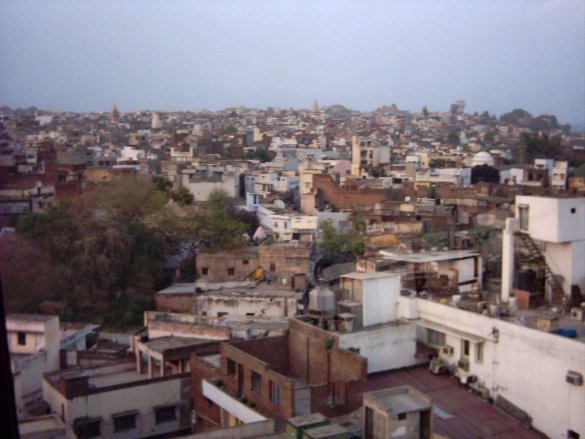
Jammu is the southern most region of the state Jammu and Kashmir that is known for shrines and places of worship for both Hindus and Muslims. Jammu is snuggled against the background of the snow capped Pir Panjal Range that makes it a city with spectacular beauty. Jammu city lies between the extremes of Himalayan range in the north and the dusty plains of Punjab in the south. Jammu forms a series of scrub-covered hills, forested mountain ranges and river valleys, that covers several microclimatic regions extending from Kishtawar in the north-east to Akhnoor in the south-west, and Poonch in the north-west to the borders of Kangra (HP) in the south-east. The Shivalik ranges cut across Jammu from the east to the west while the rivers Ravi, Tawi and Chenab cut their way through the region.

Jammu city was founded by Ramchandra I, the governor of the Himalayan Kingdom appointed by Akhbar and is named after Hindu goddess Jamwa Mata. But it is also said King Suryavanshi Jambu Lochan went for hunting crossing the Tawi river where he saw a deer and a tiger drinking water from the same tank. His ministers explained that this meant that the soil of the place was so virtuous that no living creature had any enmity against another. He was charmed by this unusual sight and he decided to build a capital city on this land, named 'Jambupura', on the right bank of the Tawi, overlooking his brother king Bahu's fort. In 1730 AD, Jammu came under the rule of the Dogra king, Raja Dhruv Deva. The Dogra rulers moved their capital to Jammu that made it an important centre of art and culture.
Today, a number of temples and shrines, with glittering ‘shikhars’ touching the sky, make the skyline of Jammu that creates the environment of a holy and peaceful city. The city of Jammu is also known as the ‘City Of Temples’. The most famous temples in Jammu are Mata Vaishno Devi and the temple of Maha Kali which is better known as Bahu or Bawey Wali Mata and is located in the Bahu fort. In the present times Jammu is the winter capital of Jammu and Kashmir, while Srinagar is the summer capital. The majority of population according to the 2001 census, in Jammu are Hindus, constituting 65.23% of the total population, while the Muslims, Sikhs and Muslims constitute 30.69%, 3.57% and 0.51% of the total population. The total population of Jammu is 4,430,191 according to 2001 census.

In Jammu many cultures and traditions are found. These are Dogra, Gujjars, Gaddis and Bakkarwalas. The Dogra culture and tradition is similar to that of Punjab and Himachal Pradesh. These people even celebrate traditional Punjabi festivals like Lohri and Vaisakhi. Gujjars are the second-largest cultural group in Jammu. Gujjars are well known for their semi-nomadic lifestyle. Gaddis are similar to Gujjars and are herdsmen who come from the Chamba region in Himachal Pradesh. Gaddis are known for emotive music they play on the flute. The Bakkarwalas are wholly nomadic pastoral people who move along the Himalayan slopes in search for pastures for their huge flocks of goats and sheep. The languages spoken in Jammu are Dogri, Hindi, English, Urdu, Kashmiri and Punjabi.

The Jammu region is divided into 10 major districts that are Kathua District, Jammu District, Samba District, Udhampur District, Reasi District, Rajouri District, Poonch District, Doda District, Ramban District and Kishtwar District. Jammu has an area of about 20.36 Sq. km and altitude is 305m. Jammu experiences rainfall of about 107 cms from July to September every year. Best season to visit Jammu is from October to April. In Jammu temperature ranges from 26.2 to 4.3 degrees cent in winter and 43.0 to 23.4 degree cent. in summer. People wear Heavy/Medium woolens in winters and light cottons in summers.
Check this out:Places to Visit
How to reach Jammu
No comments:
Post a Comment